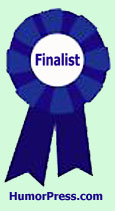When I arrived in Marin Country 20 years ago, the first thing I noticed was the number of restaurants. There are almost as many restaurants per person in Marin as there are therapists. Almost.
Marin County has three kinds of restaurants. There are ones that serve good old American food, of which I’ve discovered two. There are ethnic restaurants, all Mexican or Asian, or Mexican-Asian fusion. Think curried taco, that’s Mexican with a more sophisticated bite to it.
Lastly, there are expensive gourmet restaurants. These number in the thousands and serve cuisine in place of food. Cuisine means the waiter has to read the menu to you.
I rarely go to a cuisine restaurant unless I am on a date or an expense account, and I always order steak. Of the three high school French words I remember, only “boeuf” — meaning beef — is fit for mixed company. You can’t pronounce “boeuf” properly unless you were born in France and uncontaminated by the sounds of any other language before age eleven.
I once tried the strategy of asking I’m-Your-Waiter-Maurice what he’d recommend, but he said something like “I SOU’JEST FROO-EE’ DUH MARE PRO-VAUGHN’SAL OH GRAT-TAHN.” To pronounce the last portion — “OH GRAT-TAHN” — requires a sinus condition that comes with French genes at no extra charge. Rather than look stupid in front of my date, I nodded my head and got something that looked like the stuff Tommie Wilson dared me to stick my hand in at the Coney Island House of Horrors.
Haute cuisine specializes in presentation, a style of cooking popular during The Great Famine as it delivers more illusion than food. The presentation format requires the chef take a small amount of food, say enough to keep a gerbil alive for four hours, and spread it around on a plate so it looks like a bargain at $38.89. There are two techniques chefs employ to achieve this price-value illusion — sculpture and abstract art.
In the sculpture approach, a chef uses culinary tweezers to tease 832 molecules of food into a three-dimensional representation of a tiny Smurf village — though, ironically, blue-colored items are disallowed due to their high barf quotient. As in the game of Pick-Up-Sticks, your task as the diner, using only the fork provided, is to withdraw one piece at a time without collapsing the structure. If you fail, your bill is doubled.
The abstract approach uses less food but requires artistic talent — at least at a kindergarten finger-paint level. Three small islands of food are carefully positioned on your plate:
First is the promised “boeuf.”
Second is a vegetable carved into a shape making identification impossible, even by the secret CIA labs located at 1547 Walling Road, Langley, Virginia.
The last item on your plate is a wannabee lettuce leaf cradling three round objects that emit color in the red-light spectrum. There is a daily contest to identify these mystery “fruites.” The winning table gets their bill sale-taxed at Nevada rates.
After the key food items are in place, 93 percent of the white plate still shows through. Your attention is diverted from this vision of emptiness by several curving lines of what looks like cake decoration except shinier. By the time you realize it doesn’t spell anything, you’ve forgotten that you’re staring at an empty plate. This syndrome is known in culinary circles as “plate hypnosis.”
Looking like Jackson Pollack on a low paint day, this “food ribbon” is applied to the plate using a decorator tube and an arc welder, the very same technique bakers use to write “Happy 50th Birthday Bernice.” The next time you dine out, hold your plate up to a mirror. You will see that the food ribbon spells out a warning: DO. NOT. EAT.
The warning is there because the FDA has not yet certified this decorative material as a foodstuff, though it’s been in the approval process since 1937, along with most MacDonald menu items.
There are unsubstantiated underground urban rumors that “ribbon food” features an exotic Central American psychedelic that, when ingested, will reveal the Mysteries of the Universe. When parents aren’t looking, Marin teenagers have been observed snorting food ribbons using their Shirley Temple straws.
I didn’t used to eat cuisine very often but, since moving here, I seem to have acquired a taste for it. You may run across me cuisining in Marin some night. I’ll be the guy with the Crazy Straw
